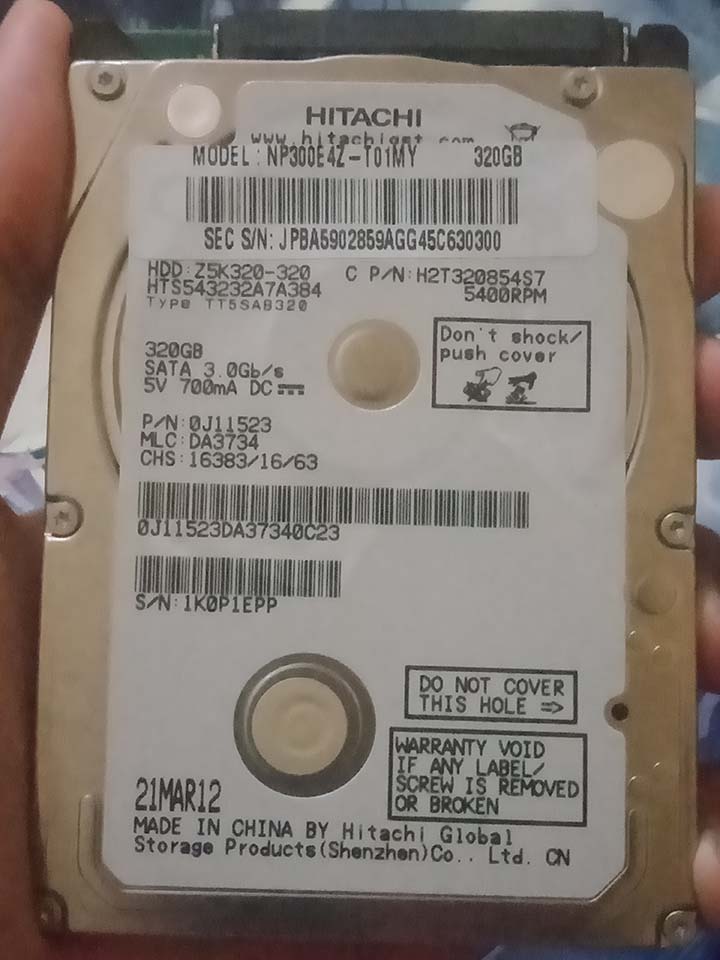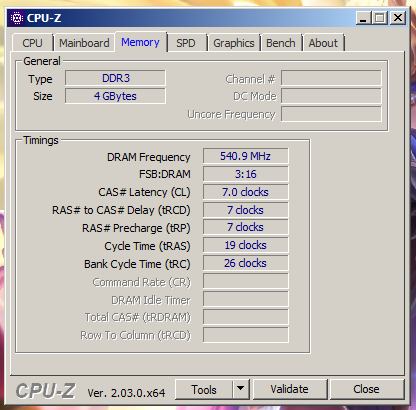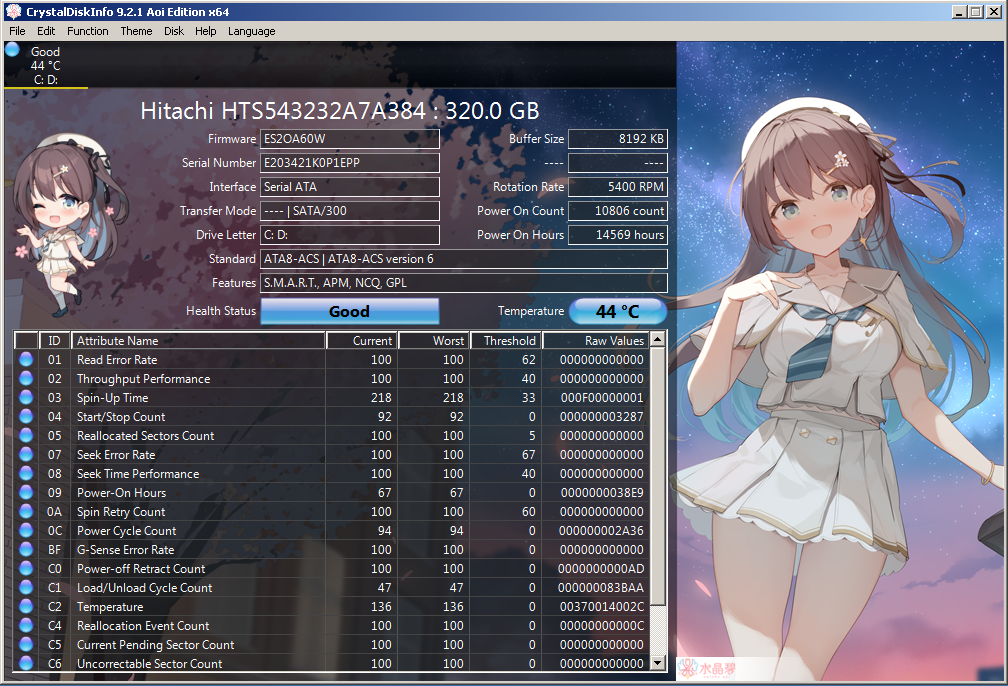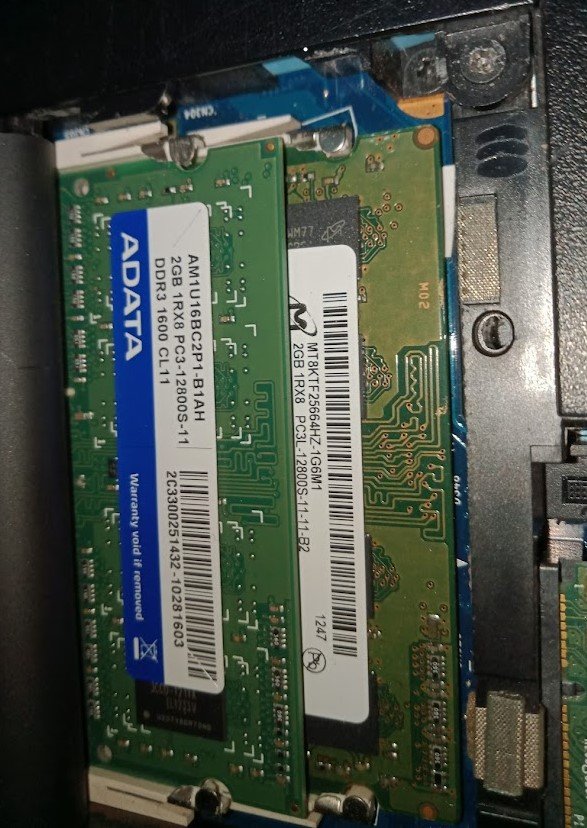Comparing: Hitachi HTS543232A7A384 vs DDR3 SODIMM 1066MHz [Disk]
In this comparison, we analyze two Disks: Hitachi HTS543232A7A384 and DDR3 SODIMM 1066MHz [Disk], using synthetic benchmark tests to evaluate their overall performance. This side-by-side comparison helps users understand which hardware delivers better value, speed, and efficiency based on standardized testing. Whether you're building a new system or upgrading an existing one, this benchmark-driven evaluation offers valuable insights to guide your decision.

Hitachi HTS543232A7A384
| Type: | Disks |
|---|---|
| Model: | Hitachi HTS543232A7A384 |
| Capacity: | 320GB |
| Interface: | SATA-II 3Gbps |

DDR3 SODIMM 1066MHz [Disk]
| Type: | Disks |
|---|---|
| Model: | DDR3 SODIMM 1066MHz [Disk] |
| Capacity: | 2GB |
| Interface: | DDR3 |
Specification Comparison Table
This specification comparison presents technical details of several devices or components to help you understand the key differences between each option. Use this table as a reference to determine which device best suits your needs.
| Specification | Hitachi HTS543232A7A384 | DDR3 SODIMM 1066MHz [Disk] |
|---|---|---|
| Brand | Hitachi | - |
| Format | HDD 2.5 | RAM Disk |
| Capacity | 320GB | 2GB |
| Interface | SATA-II 3Gbps | DDR3 |
Submission Comparison Table
This submission comparison table displays the number and details of benchmark data submissions from various devices or components. This information helps you understand the performance based on the benchmarks that have been tested, as well as providing an overview of the consistency and popularity of the available benchmark results.
| No. | Benchmark Software | Hitachi HTS543232A7A384 | DDR3 SODIMM 1066MHz [Disk] |
|---|---|---|---|
| 1 | ATTO Disk Benchmark - 64M |
Read: 72.93 MB/s Write: 72.83 MB/s |
Read: 1020.00 MB/s Write: 1080.00 MB/s |
| 2 | Cross Platform Disk Test |
Read: 41.11 MB/s Write: 17.51 MB/s |
Read: 658.01 MB/s Write: 265.28 MB/s |
| 3 | CrystalDiskMark |
Read: 80.74 MB/s Write: 79.69 MB/s |
Read: 746.24 MB/s Write: 828.18 MB/s |
Submission Comparison Chart
This chart visualizes the benchmark scores comparison between two hardware devices based on submitted data.
Media Gallery
A collection of photos of tested hardware. These images can help you identify the physical form, model, and variant of the hardware in question. These photos are from our own documentation, and if they are not available we may not be able to document them.
About Hardware Hitachi HTS543232A7A384
The Hitachi HTS543232A7A384 is a 2.5-inch hard disk with a 320GB capacity, designed for laptops and portable storage devices. It uses a 3Gbps SATA II interface and has a rotation speed of 5400 RPM, making it a more power-efficient option than 7200 RPM HDDs. This speed is ideal for light everyday use, where power efficiency and stability take precedence over high performance.
With 8MB of buffer cache, the drive is reliable enough to handle document storage, multimedia files such as music and videos, and light applications. While its data transfer speeds are not as fast as modern SSDs, the HTS543232A7A384 remains a solid choice for users looking for low-cost, high-capacity storage, especially in previous generation laptops or external enclosures.
The main test was conducted using a SAMSUNG 300E4Z laptop equipped with Intel Celeron B815, 4GB DDR3 Dual Channel RAM (2x2GB), and running Windows 7 64-bit operating system. The results obtained reflect real performance in an entry-level computing environment.
In addition, the HDD was also tested using the cross-platform method by utilizing a USB 3.0 enclosure connected to a Lenovo IdeaPad Slim 3i 14ITL6 (Intel Core i5-1135G7, Windows 11) via a USB 3.1 Gen 1 port. This test showed that the hard disk remains compatible and works well on modern devices via an external connection, although performance is limited by the speed of the internal drive.
With its reliable design and broad compatibility, the Hitachi HTS543232A7A384 is still relevant as a backup storage solution or external storage medium for users who need a sizable storage capacity without having to spend a lot.
Tested on:
Device: SAMSUNG 300E4Z
CPU: Intel Celeron B815
RAM: 4GB DDR3 Dual Channel (2x2GB)
OS: Windows 7
* Special Cross Platform Disk Test using IdeaPad Slim 3i 14ITL6 Laptop (i5-1135G7, Win11, USB 3.1 Gen 1) and using USB 3.0 Harddisk Enclosure
Tuesday, 22 November 2022 02:54:03 | Update: 1 month ago
About Hardware DDR3 SODIMM 1066MHz [Disk]
DDR3 SODIMM 1066MHz is a third-generation memory module with a speed of 1066MHz that is commonly used in laptops and small devices. With the SODIMM form factor, these modules are often the standard choice for mobile computing systems, serving as the main memory for running operating systems, applications, and light to medium multitasking processes.
However, in this particular experiment, two 1066MHz DDR3 SODIMM modules from Micron and ADATA (2GB capacity each) were uniquely configured as a RAMDisk, a temporary storage space that uses RAM capacity to simulate a storage drive with much higher access speeds than SSDs or HDDs.
The 1066MHz DDR3 SODIMM-based RAMDisk test was conducted on an HP 1000 1b05au laptop device, powered by an AMD E1-1200 processor. The system is equipped with a 2x2GB DDR3 SODIMM 1600MHz RAM configuration, but due to processor architecture limitations, the memory only runs in single channel mode with an effective speed of 1066MHz. The operating system used is Windows 7, and to create and manage the RAMDisk, two popular applications, SoftPerfect RAMDisk and ImDisk Virtual Disk Driver, were used. The configured RAMDisk size was 2GB, utilizing some of the available RAM capacity.
Even though the device specifications are old and have limited memory bandwidth, the RAMDisk configured in this system was still able to show excellent performance in the read and write speed benchmarks. Based on tests using CrystalDiskMark, the read speed reached 746.24 MB/s, while the write speed touched 828.18 MB/s. In a follow-up test using ATTO Disk Benchmark with a 64MB block size, the read speed increased to 1020.00 MB/s, and the write speed reached 1080.00 MB/s. These results prove that even on older systems, RAMDisk configurations are still capable of delivering very high I/O performance, far surpassing conventional storage such as HDDs or even some SSDs.
Analysis
The results show that a 1066MHz DDR3-based RAMDisk is still capable of delivering data transfer speeds on par with entry-level NVMe SSDs, even outperforming many SATA SSDs and leaving conventional HDDs far behind. This makes RAMDisks an ideal solution for temporary use such as:
- Application caching,
- Temporary file storage,
- Fast computing with high I/O,
- Software or script testing without the risk of contaminating the main file system.
Although limited to a small capacity (2GB in this test), RAMDisk is still very useful for specific needs, especially for users with more than enough RAM or older devices that want to maximize their performance.
Test on:
Device: HP 1000 1b05au
Specs:
CPU: AMD E1-1200
OS: Windows 7
RAM: 2x2GB Single Channel 2 DIMM 1066MHz (Does not support dual channel due to limitations of the CPU, currently running single channel mode and 1066MHz)
Wednesday, 26 December 2012 14:27:32 | Update: 1 month ago



